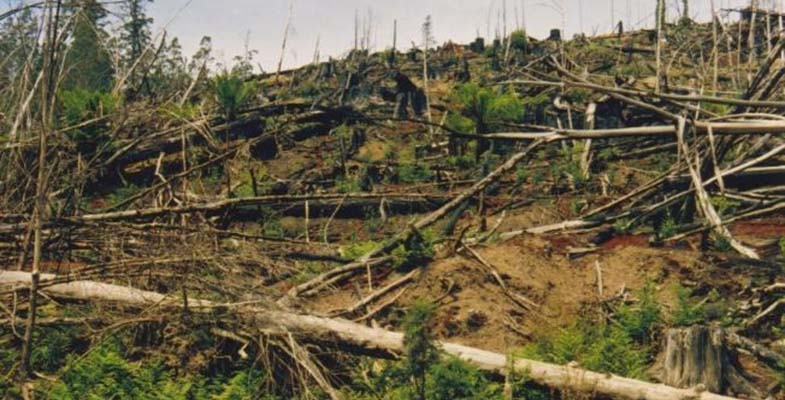There has been a flurry of legislative action and announcements during the final months of the year following varying periods of consultation. The concerns about the legislation have been covered in recent issues of STEP Matters and more details are provided by the peak bodies leading the campaigns, the Nature Conservation Council and Total Environment Centre. Here is a brief update concentrating on the implications for urban areas.
Crown Land Management
The new Crown Law Act was pushed through state parliament on 9 November. The government claims that the new legislation will reduce complexity and deliver better management. It is expected that commencement will be in early 2018 after the required policies and systems have been prepared.
Submissions to the inquiry pointed out that, in fact, the problems with the current legislation are with administration, not the act itself. There are many examples of the misuse of crown land, for example the Talus Reserve in Willoughby that Willoughby Council allowed to be taken over by commercial interests that have generated a private profit.
Under the new legislation crown land may be transferred to local government or vested in other NSW government agencies. It is unclear whether they will be given the financial resources to carry out these new responsibilities. It seems there would be no barriers to councils classifying the land as operational land that could be sold or leased for development without any community consultation. Time will tell!
Climate Change Policy
One item of good news is that the NSW government announced a policy to reduce greenhouse gas emissions to zero by 2050. The announcement documents contain lots of statements of intention but most of them are dependent on federal government policy and action.
The sincerity of the government’s policies are now called into question. A Climate Change Fund was established by the NSW government in July 2007 to help households, businesses, community organisations, schools and government to save water, energy and greenhouse gas emissions. We now learn that the $240 million for private land conservation under the new Biodiversity Act will come from this same fund ‘to help landholders and land managers reduce the impacts of climate change on natural systems’.
Biodiversity and Land Clearing Laws
On 17 November the biodiversity laws were passed with the help of the Shooters and Fishers and Fred Nile’s Christian Democrats in the Upper House. Over 7,000 submissions were received with the majority expressing alarm about the prospects for increased land clearing and relaxed biodiversity offset provisions. Some minor changes have been made to the draft bills:
- Some vitally important areas will be excluded from the land clearing codes which means that it will be harder for farmers to clear them. These areas include coastal and Ramsar wetlands, littoral rainforest, core koala habitat, critically endangered ecological communities, old growth forests and high conservation value grasslands.
- The act ensures that the Office of Environment and Heritage will remain responsible for compliance and enforcement of the legislation, rather than the Department of Primary Industries as the government originally suggested.
- The Minister for the Environment and Minister for Primary Industries have the power to stop the use of land clearing codes under certain circumstances which is significant due to the expansion of codes under the new legislation.
- The use of biodiversity offsetting is greatly expanded under the new legislation which is a significant concern, however the final legislation has improved the offsetting provisions by requiring the minister to ensure that offsets result in ‘no net loss’ of biodiversity. This creates the opportunity to pressure the minister to adopt a more strict interpretation of offsetting that will have tangible result for bushland across the state.
Further consultation will occur on regulations that are yet to be released on aspects such as ‘red lights’ for development that impact on critically endangered species, testing of the Biodiversity Assessment Method that will determine how the impacts of development on biodiversity are managed and the long awaited State Environmental Planning Policy that will decide the fate of urban vegetation and biodiversity.
The government is still trumpeting the benefits that will come from private conservation actions but it is unclear how this can compensate for lost vegetation and habitat in other areas and that there will be sufficient long-term funding. In fact it has recently been discovered that the Climate Change Fund has been raided to provide funding for private land conservation.
Draft land clearing codes and regulations will be released early in 2017 for consultation.
Greater Sydney Commission District Plans
The much anticipated District Plans were released on 21 November. Submissions may be made up to the end of March and the intention is to finalise the plans by the end of 2017.
The District Plans cover the next 20 years. The overriding document is the Plan for Growing Sydney that covers development up to 2056. Over this time Sydney’s population is projected to grow from the current 4.6 million to 8 million.
On first perusal the District Plan for northern Sydney appears to recognise the value of our bushland and coastal environments. The detail is not available on how Local Environment Plans can be used in future to ensure the preservation of wildlife corridors and local bushland as well as national parks.
At forums organised by the Better Planning Network, commissioners have emphasised social and economic aspects of the plans. The environment seems to be a poor relation instead of being a vital consideration that will impact on socio-economic outcomes. For example, who wants to live in a concrete jungle of high rise apartments with no shade or natural landscape nearby?
The consultation period provides an opportunity for the public to reinforce the importance of maintaining healthy quality green spaces, bushland and national parks that are identified in the District Plans. Please write a submission.

